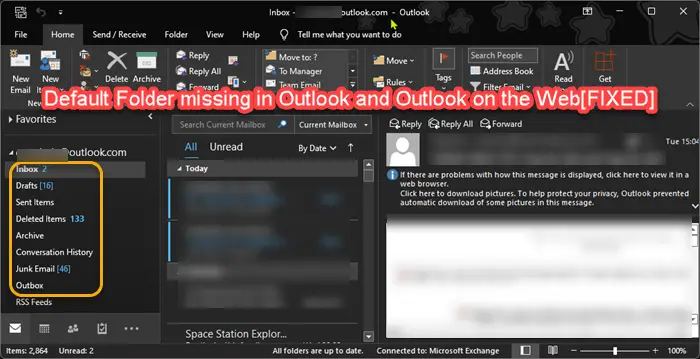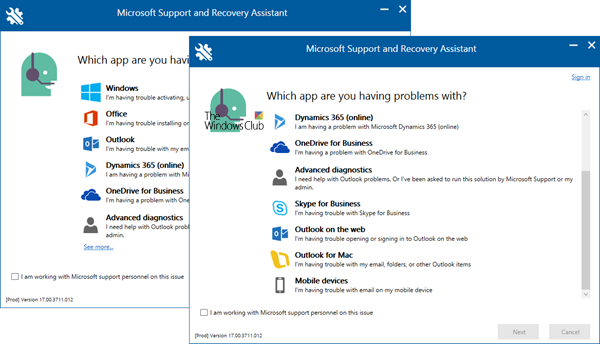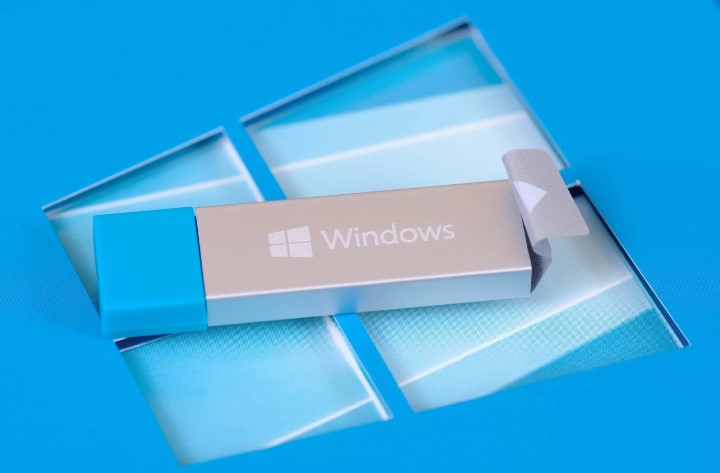Default Folders missing in Outlook and Outlook on the Web

If you find that the Default Folders (Inbox, Sent Items, etc.) are missing in Microsoft Outlook or Outlook.com, then this post is sure to help you restore the missing folders and resolve the issue.
Default Folders missing in Outlook and Outlook on the Web
If you have noticed that some Default Outlook Folders (eg, the Inbox) are missing in the Outlook client on your Windows 11/10 PC or Outlook on the Web, you can try our recommended solutions below in no particular order and see if that helps to fix the issue.
- Run Microsoft Support and Recovery Assistant tool
- Create Outlook.com email alias
- Repair/Reset/Reinstall Outlook client
- Change PR_ATTR_HIDDEN and PR_ATTR_SYSTEM value
- Perform System Restore
- Set up and use Mail app
Let’s take a look at the description of the process involved concerning each of the listed solutions.
Before you proceed with the solutions below, you can update Microsoft Office manually on your device. We recommend you make sure Office Automatic Updates is enabled and you turn on Receive updates for other Microsoft products in Windows Update.
1] Run Microsoft Support and Recovery Assistant tool

You can begin troubleshooting to fix the issue of some Default Folders missing in Outlook and Outlook on the Web by running the Microsoft Support and Recovery Assistant tool on your Windows 11/10 device – the command-line version of the SaRA tool is also available.
The tool can help you with Outlook if:
Try the next solution if the automated wizard wasn’t helpful.
2] Create Outlook.com email alias
This is more of a workaround than a solution. Before you try this workaround, first sign out of Outlook on the Web, and then sign back in and see if the missing default folders are restored. If not, you can create an Outlook.com email alias.
Having an email alias is very useful if you do not want to give out your main email ID to someone, and do not want to create a new Outlook email account – but instead manage the account from your existing account. This way, you can use different email IDs for different things easily.
Read: Fix Outlook on the Web problems and issues.
3] Repair/Reset/Reinstall Outlook client
This solution requires you to Repair/Reset/Reinstall Outlook client in that order and see if that helps.
To repair Microsoft Outlook on your Windows 11/10 PC, do the following:
- Open Control Panel.
- Click Programs and Features.
- Right-click the Office program that you want to repair, and select Change.
- Next, click Repair > Continue. Office will start repairing the apps.
- Restart PC after the repair operation completes.
You can also repair Office Outlook via the Settings app on Windows 11/10. Here’s how:
- Open Settings for Windows 11 or open Settings for Windows 10
- Select Apps and Features.
- Scroll to find your Microsoft Office installation.
- Click on the entry and click on Modify.
- On the popup dialog, choose Quick Repair or Online Repair.
- Click on the Repair button.
If the repair operation wasn’t helpful, you can reset Outlook and see if the issue in hand is resolved. Otherwise, you can uninstall Office and then reinstall Office suite on your system.
4] Change PR_ATTR_HIDDEN and PR_ATTR_SYSTEM value
This issue in view can occur if the PR_ATTR_HIDDEN or the PR_ATTR_SYSTEM property of the affected folder is set to True. The default value for both mentioned attributes for mailbox folders is False.
This solution requires you to change PR_ATTR_HIDDEN and PR_ATTR_SYSTEM values of the missing folder. Do the following:
- Download the MFCMAPI tool.
- Unzip the archive package.
- Launch mfcmapi.exe.
- Click OK button on the intro screen.
- Next, click the Session tab on the menu bar.
- Select Logon.
- Select the Outlook profile for the affected mailbox.
- Select OK.
- Double-click the email address that represents the desired mailbox.
- In the left pane, navigate to the affected folder using the appropriate steps below for the type of Outlook profile you are using.
If Cached Mode, navigate to the following:
Root - Mailbox > IPM_SUBTREE
If Online Mode, navigate to the following:
Root Container > Top of information Store
- Next, on the left navigation pane, locate and select the folder that appears missing in Outlook.
- Now, on the right pane check the value of the
PR_ATTR_HIDDENand/orPR_ATTR_SYSTEMto determine if it is set toTrue. - If set to True, right-click the
PR_ATTR_HIDDENorPR_ATTR_SYSTEMproperty as the case may be, and select Edit Property. - Uncheck the Boolean option.
- Click OK.
- Close all MFCMAPI windows.
- Restart Outlook.
The issue should be resolved now. If not, try the next solution.
5] Perform System Restore
Another viable solution you can try as it relates to specifically the Outlook client installed on your Windows 11/10 computer is to perform System Restore – this is assuming all default folders in Outlook were present at an earlier given time. So, it is possible your system has undergone some changes you are not aware of, or that wasn’t user-initiated; and since you do not know what might have broken the Outlook client functionality on your device, System Restore (any changes like application installs, user preferences and anything else made after the restore point will be lost) is an option you should explore.
6] Set up and use Mail app
This solution requires you to set up the Mail app and use the Mail app on your device. Alternatively, you can opt for any of the best free Email Clients for Windows 11/10 PC.
Any of these solutions should work for you!
TIP: You can configure Outlook to get WARNED before moving or deleting folders. You should also be able to open Journal folders, empty the Junk Email Folder, create a Search Folder, copy Outlook email folders to your Windows 11 or Windows 10 desktop and change default Outlook Startup folder.
Why are some of my folders not showing in Outlook?
Some of the reasons or causes for missing Outlook Folders includes; some of your Outlook folders are hidden. A folder was inadvertently deleted. Outlook isn’t syncing with the server. The personal folder file is damaged.
How do I restore the default folder in Outlook?
To reset or restore Outlook folder names or language, do the following:
- Open Command Prompt.
- Type
c:and hit Enter to make sure you are on the C drive. - Next copy and paste the command
cd "Program FilesMicrosoft OfficeOFFICE16"and hit Enter. - Next, type in the command
outlook /resetfoldernamesand hit Enter. - Restart Outlook. The folder names are now reset.
Why can’t I see my folders in Outlook Web App?
If you can’t see your folders in Outlook Web App, do the following: Go to Outlook on the web. To view your mail folders, click on the ‘arrow’ next to “Folders” to expand your folder listing. You should now see all of your folders listed in the left-hand column.
How do I find a folder in Outlook that has disappeared?
In the email window, press Ctrl+Shift+F to open the Advanced Find dialog box. Click Browse to display a pop-up window of your folder structure, pinpointing where your ‘hidden’ folder resides.














